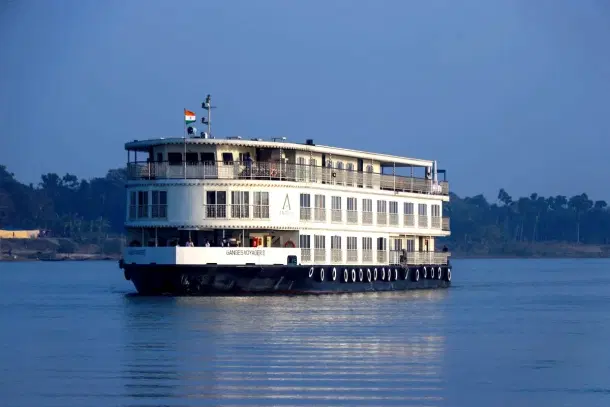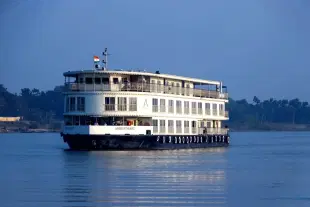News Brief
Key Inland Water Transport Projects Underway In Uttar Pradesh Under Sagarmala Programme
Arun Dhital
Jul 25, 2025, 04:55 PM | Updated 04:55 PM IST
Save & read from anywhere!
Bookmark stories for easy access on any device or the Swarajya app.


The Government of India has undertaken several key projects in Uttar Pradesh to strengthen inland water transport (IWT) infrastructure under the Sagarmala Programme, the Parliament was told on Friday (25 July)
The Ministry of Ports, Shipping and Waterways in a reply to the questions asked in the Lok Sabha, said that these initiatives aim to improve trade connectivity, reduce logistics costs, and promote sustainable transport modes across the state.
Completed projects include the development of a multimodal terminal at Varanasi costing Rs 182.33 crore and 11 community jetties across Varanasi, Chandauli, Ghazipur, and Ballia, developed at a cost of Rs 17 crore.
Additional installations include jetties in Ayodhya (Rs 4 crore) on National Waterway 40 (Ghaghara River), two electric catamarans operating in Varanasi and Ayodhya (Rs 25.6 crore), and a hydrogen fuel cell vessel in Varanasi (Rs 22.62 crore).
The total cost of these completed works amounts to Rs 251.55 crore.
Ongoing projects includes several fairway development projects, such as those between Majhauwa and Ghazipur (Rs 78.64 crore) and from Ghazipur to Varanasi (Rs 102.98 crore).
Other initiatives include constructing four steel community jetties in Ballia and Ghazipur (Rs 7.82 crore), developing eight jetties in Mathura (Rs 12 crore), and executing dredging operations in Ayodhya and Mathura (Rs 8.45 crore).
Major infrastructure works underway also include a river cruise terminal (Rs 200 crore), a regional centre of excellence (Rs 150 crore) in Varanasi, and a ship repair facility (Rs 50 crore).
To support regional logistics, the Inland Waterways Authority of India (IWAI) has acquired 75 acres in Chandauli district for a freight village near the Varanasi multimodal terminal.
Minister of Ports, Shipping and Waterways, Sarbananda Sonowal said, “The freight village offers numerous benefits including employment generation in logistics and allied sectors, support for local MSMEs and farmers through better storage and transport, reduced city road congestion.”




